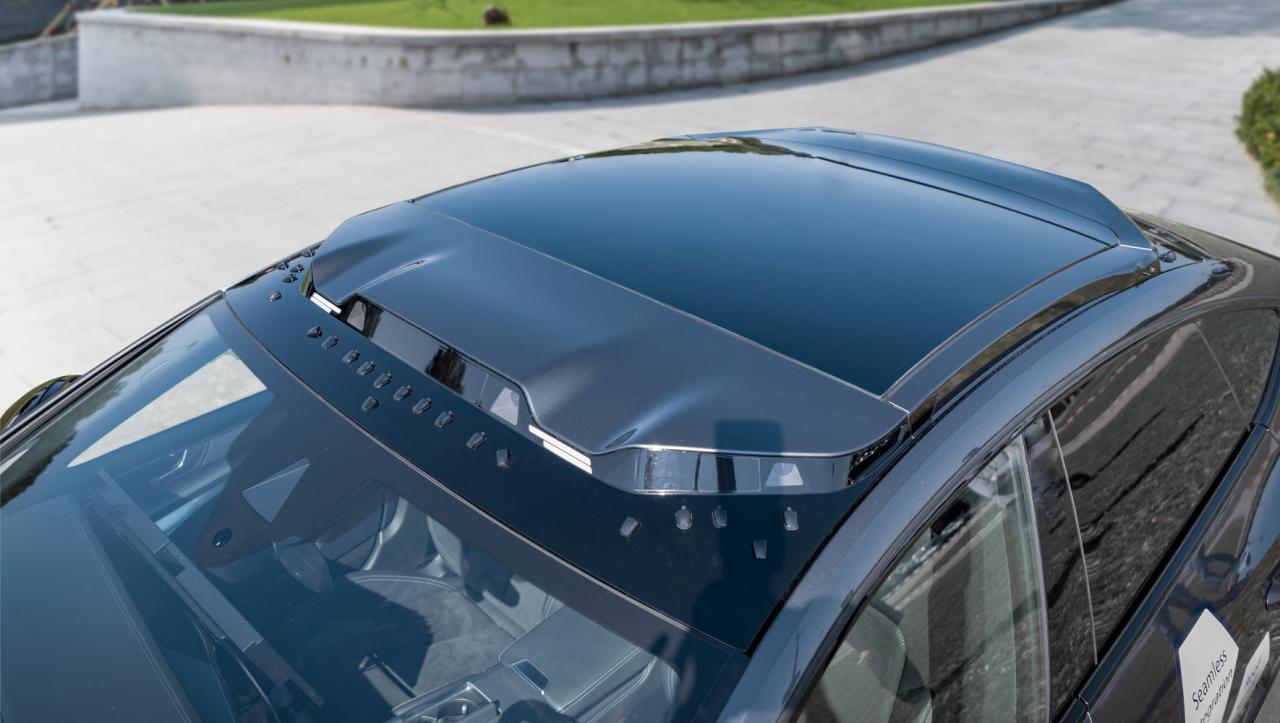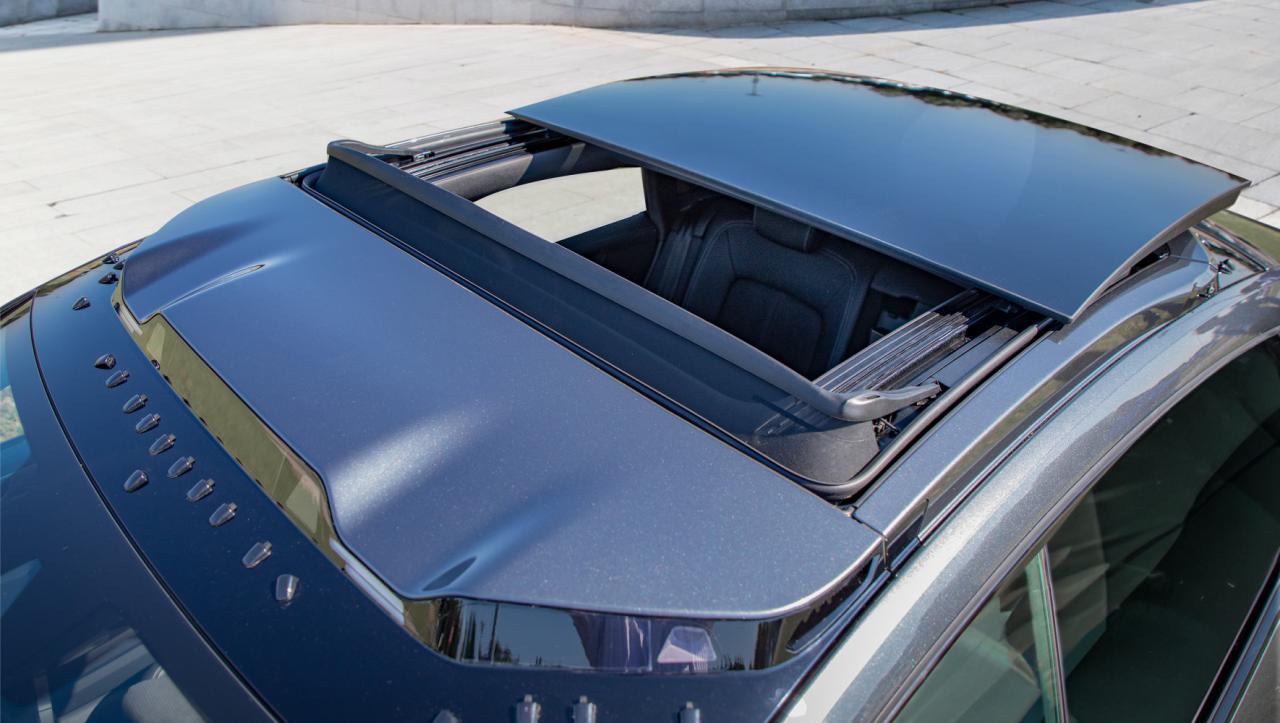
The safety of all road users is the most important prerequisite for the introduction of autonomous driving. To do this, the car must “learn” to recognize obstacles and hazards in a timely manner and react appropriately. This is only possible through the use of advanced sensor technology. Automotive supplier Webasto recently unveiled a prototype of a beautiful and fully integrated sensor roof module for autonomous driving. In the production process, Webasto uses Covestro’s transparent polycarbonate Makrolon®
AG and black PC-ABS Bayblend® T95
MF: The first product was developed for a glass-like external component that is highly permeable to various sensor signals. At the same time, it meets high mechanical performance requirements. Furthermore, it provides the necessary design freedom to embed all relevant electronic components while providing the components with an attractive external design.
It’s not for nothing that the 14 sensors and cameras are located in the roof module: at the highest point of the car, they are ideally positioned to provide a complete overview of the surrounding environment. The lightweight plastic also ensures that the vehicle’s center of gravity is lower, allowing it to stay on the road better. However, despite technological advances in autonomous driving, previous sensor positioning solutions were often visually unsatisfactory. Webasto now proposes a new concept that also meets the need for beautiful vehicle structures.
Fabian, Global Technical Marketing Head of Mobility Business, Covestro Engineering Plastics Division
Dr. Grote said: “We are proud to work with Webasto and other partners to develop innovative solutions for autonomous driving. The complete sensor technology is hidden in a package made of Makrolon®
Under the seamless roof module made by AG. Our plastics are lightweight, durable, strong and transparent, making them the ideal solution for integrating sensors into vehicles. We are pleased to contribute to more sustainable mobility. ”
Sensors and cameras measure the distance and speed of objects in front of and beside the vehicle and reliably detect traffic lights, traffic signs and road markings. For optimal function, they must not get too hot. Webasto’s thermal management system ensures this. Here, the high heat resistance of polycarbonate ensures that the roof module retains its shape even in high outdoor temperatures and strong sunlight, without compromising the functionality of the sensors. On the other hand, the cleaning and de-icing system ensures its perfect operation during the winter.

Partnerships with leading automakers
Covestro, also a leading supplier of material solutions for autonomous driving, is working with multiple partners to use special grades of polycarbonate for lidar sensor covers. At the International Symposium on Automotive Lighting (ISAL) in Darmstadt, Germany, from September 25 to 27, 2023, the company will showcase Chinese automaker Human Horizons
A roof module equipped with lidar sensors from Horizons.
Human Horizons equips its new HiPhi Z model with a lidar sensor made of PC-PET Makroblend® UT235 M
Made of casing to provide protection. The light signals emitted by these sensors pass through a coverslip made of the special polycarbonate Makrolon® AX ST, thus ensuring maximum efficiency.
The Chinese luxury model has a dozen cameras and several lidar and radar sensors installed. Therefore, it reaches driver assistance level 3 for autonomous driving.



 微信扫一扫打赏
微信扫一扫打赏
